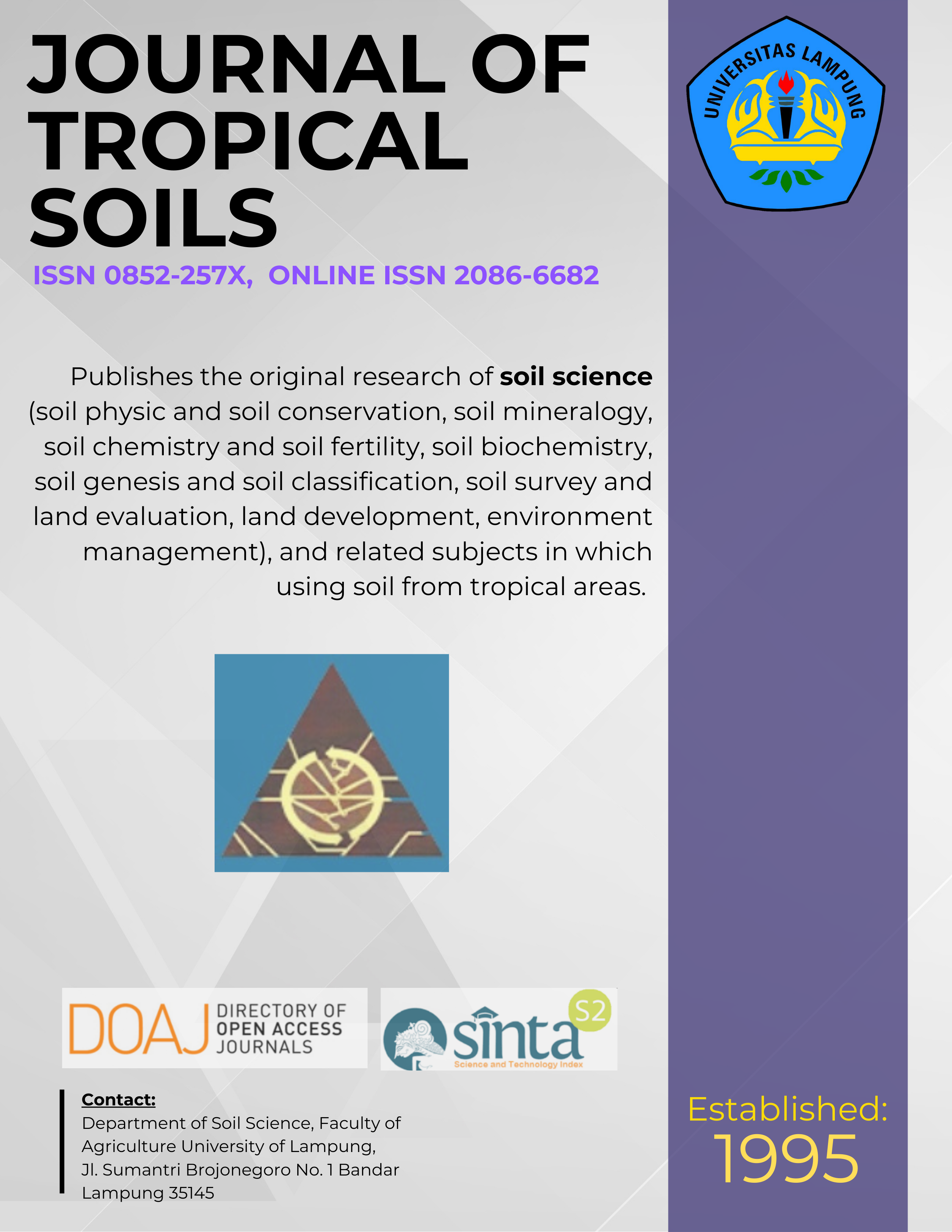Population and Diversity of Arbuscular Mycorrhiza Fungi in the Rhizosphere of Kasetsart Cassava Clone Grown on Two Different Locations
Main Article Content
Abstract
Population and diversity of arbuscular mycorrhiza fungi (AMF) are varied in the soil and influenced by biotic factors such as host plant and abiotic factors such as soil fertility, soil moisture, pH, temperature, etc. This study aimed to determine the population, diversity, and the dominant type of AMF in the rhizosphere of Kasetsart cassava clones obtained from LampungTimur and Tulang Bawang Barat Regencies, Lampung Province, Indonesia. Population of AMF was counted directly from the rhizosphere of Kasetsart cassava clones and the diversity of AMF was assesed using a pot culture experiment. The results showed that the population and the diversity of AMF in the rhizosphere of Kasetsart clone obtained from Tulang Bawang Barat was higher than that from LampungTimur. The predominant type of AMF found in the pot culture using soil samples from Lampung Timur was spore with S2 code that belongs to the genus Gigaspora and S4 code that belongs to the genus Glomus. On the other hand, the type of AMF found in the rhizosphere of soil samples from Tulang Bawang Barat was dominated by spore with S9 code that belongs to the genus Entrophospora.
Downloads
Article Details
Section
License for Authors
Authors who publish with this journal agree to the following terms:
- Authors retain copyright and grant the journal right of first publication with the work simultaneously licensed under a Creative Commons Attribution License that allows others to share the work with an acknowledgement of the work's authorship and initial publication in this journal.
- Authors are able to enter into separate, additional contractual arrangements for the non-exclusive distribution of the journal's published version of the work (e.g., post it to an institutional repository or publish it in a book), with an acknowledgement of its initial publication in this journal.
- Authors are permitted and encouraged to post their work online (e.g., in institutional repositories or on their website) prior to and during the submission process, as it can lead to productive exchanges, as well as earlier and greater citation of published work (See The Effect of Open Access).
License for Regular Users
Other regular users who want to cite, distribute, remix, tweak, and build upon author’s works, even for commercial purposes, should acknowledge the work’s authorship and initial publication in this journal, licensed under a Creative Commons Attribution License.

